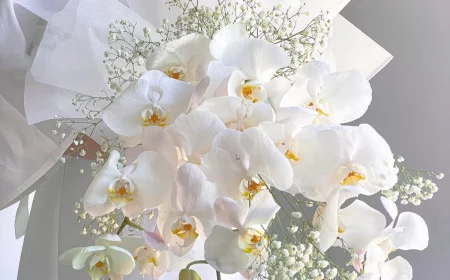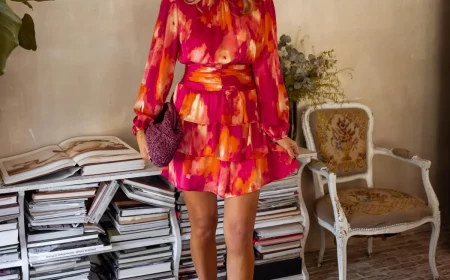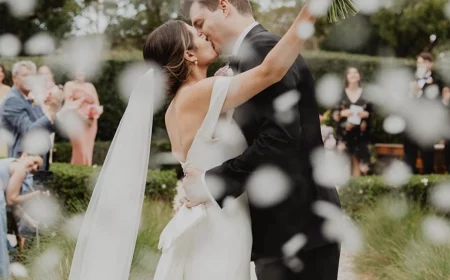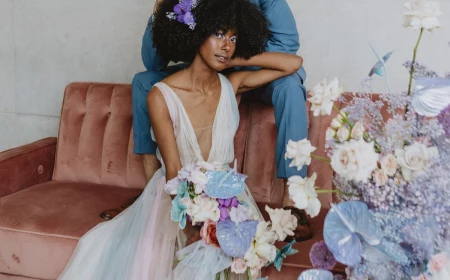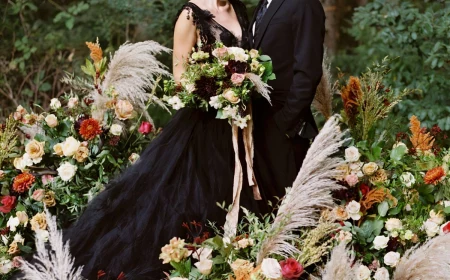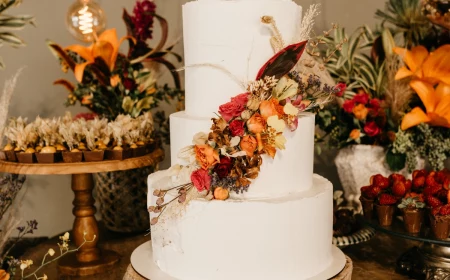Thinking of a Purple Wedding Dress? Here’s What the Pros Know
Over the years I’ve been making custom gowns, I’ve seen just about every bridal trend you can imagine. And while a classic white dress is always stunning, I have to admit, some of the most unforgettable gowns were the ones bursting with color.
In this article
I’ll never forget a bride who came to my studio clutching a small swatch of deep amethyst silk. She was so nervous. Her family was expecting traditional white, but she dreamed of a dress that felt truly, uniquely her. Crafting that gown was a masterclass in the challenges and incredible rewards of working with a color as rich and complex as purple.
Choosing a purple wedding dress is about more than just style; it’s a technical decision. You have to consider how the color will play with different fabrics, how it looks in the light, and even how it works with your skin tone. My goal here isn’t just to show you pretty pictures. It’s to pull back the curtain and share what I’ve learned in the workroom so you can walk into a bridal shop feeling confident and informed. Let’s talk fabric, color science, and all the little details that make a colored gown a true masterpiece.

First Things First: Why Fabric Changes Everything
Before you even think about falling in love with a specific shade of purple, you need to understand this one critical concept: the fabric is the color. You can take a single vat of violet dye, use it on five different materials, and I guarantee you’ll get five completely different shades of purple. It all comes down to how the fibers and the weave of the fabric absorb or reflect light.
Honestly, getting a handle on this is the most important thing you can do. Let’s break down the most common options.
For a Rich, Regal Vibe: Velvet
Velvet, whether it’s silk or a high-quality cotton blend, has a deep, plush pile. Those little upright fibers trap light, which gives the color an incredibly deep and saturated look. An aubergine or royal purple velvet gown looks and feels absolutely regal. The downside? It’s heavy and best for cooler weather weddings. Heads up: Velvet can also get pressure marks or crushes, so it needs to be handled and stored with care.
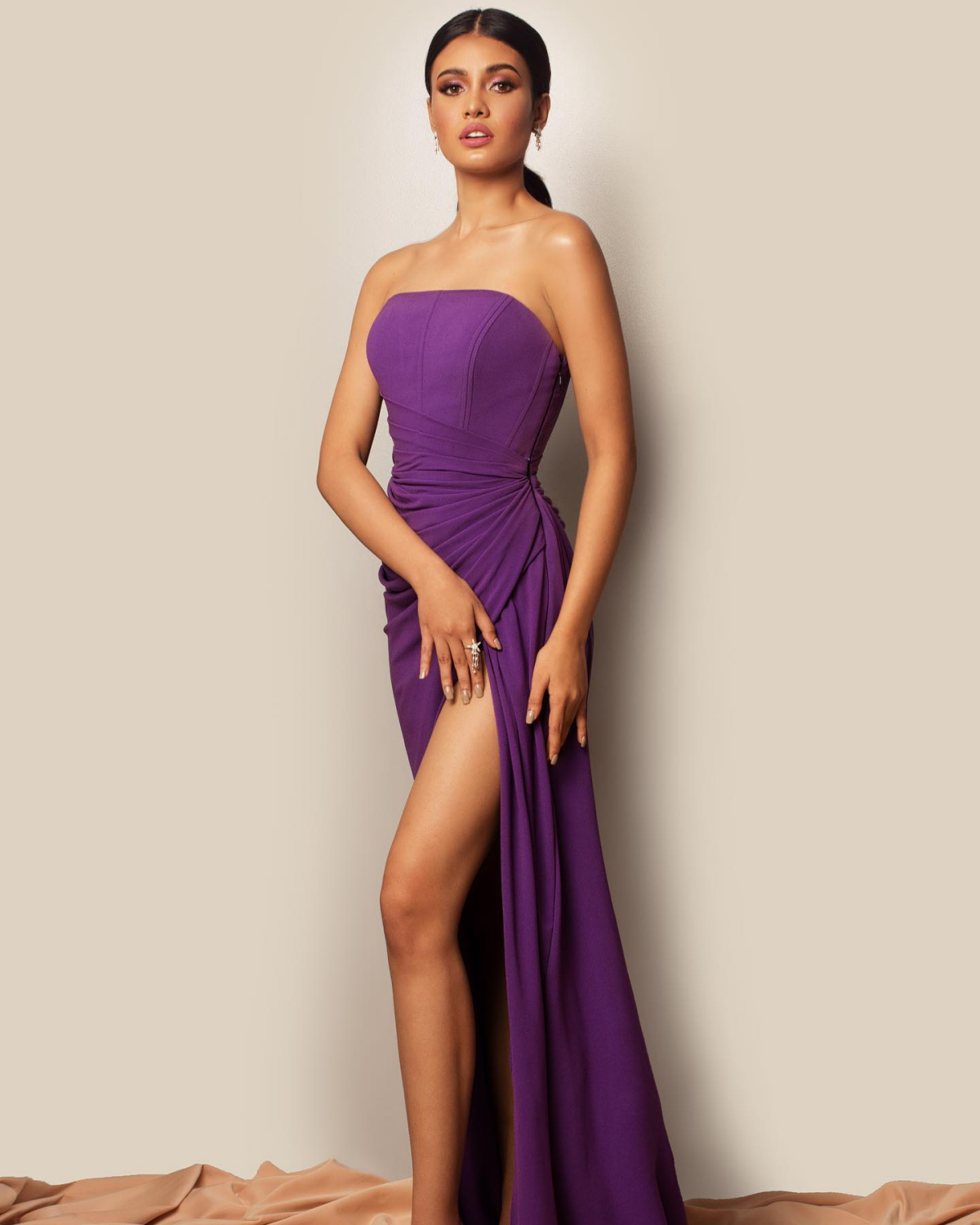
For a Liquid Shine: Charmeuse or Satin
These fabrics have a super smooth, flat weave that reflects light like crazy. A purple satin gown will have this stunning, liquid-like shine. Lighter shades like lavender and lilac can almost look metallic. The challenge here, and it’s a big one, is that the shine highlights everything underneath. Every seam, every bump, every imperfection. A high-end satin gown needs expert internal structure, like corsetry, to look perfectly smooth.
For an Ethereal, Flowy Look: Chiffon and Organza
These are your sheer, open-weave fabrics. A single layer of purple chiffon will look very pale and airy. The magic happens when you layer it. I’ve often used five, six, even ten layers of chiffon in a skirt to build up a soft, ethereal color that has breathtaking movement. A lesser-known trick is to use a dark slip, like deep plum, under layers of ivory chiffon for a really subtle, mysterious hint of color.
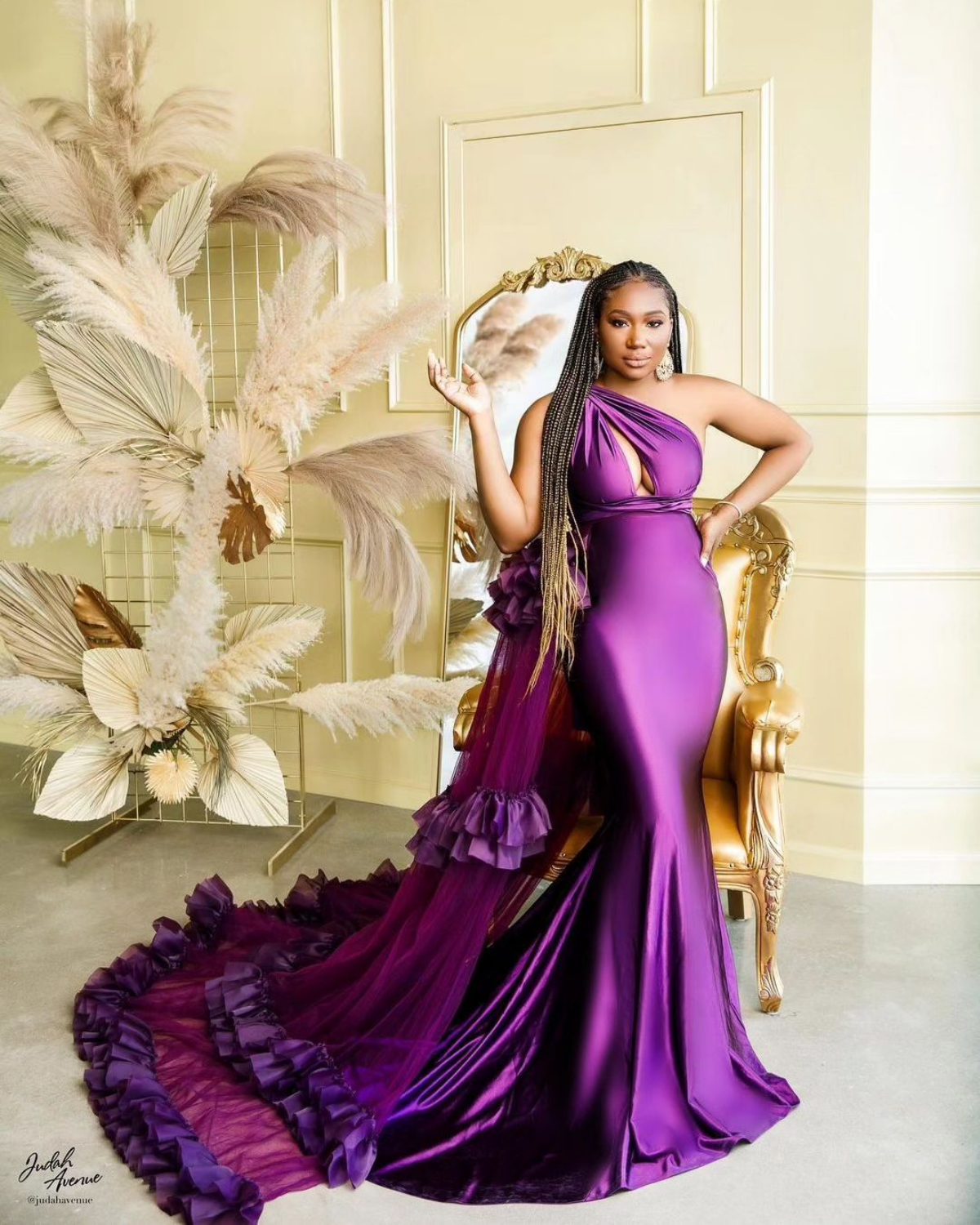
For Softness and Volume: Tulle
Tulle is similar to chiffon but has a more open, net-like structure. It takes a ton of layers to build a saturated color with tulle alone. Because of this, what you often see is actually ivory or white tulle layered over a colored satin base. This gives you the rich color of the satin with the soft, floaty texture of tulle. It’s a great way to get the best of both worlds.
The One Rule You Can’t Break: The Dye Lot
I learned this lesson the hard way early in my career, and it’s non-negotiable. Fabric is dyed in massive batches called dye lots. Even with the most precise modern formulas, there will always be tiny, tiny variations in color between each batch.
So, what does this mean for you? It means if your dress is made from one dye lot, and you later need extra fabric for alterations or a matching veil from a different dye lot, they will not be a perfect match. The difference might look tiny in the shop, but it will scream in your wedding photos.
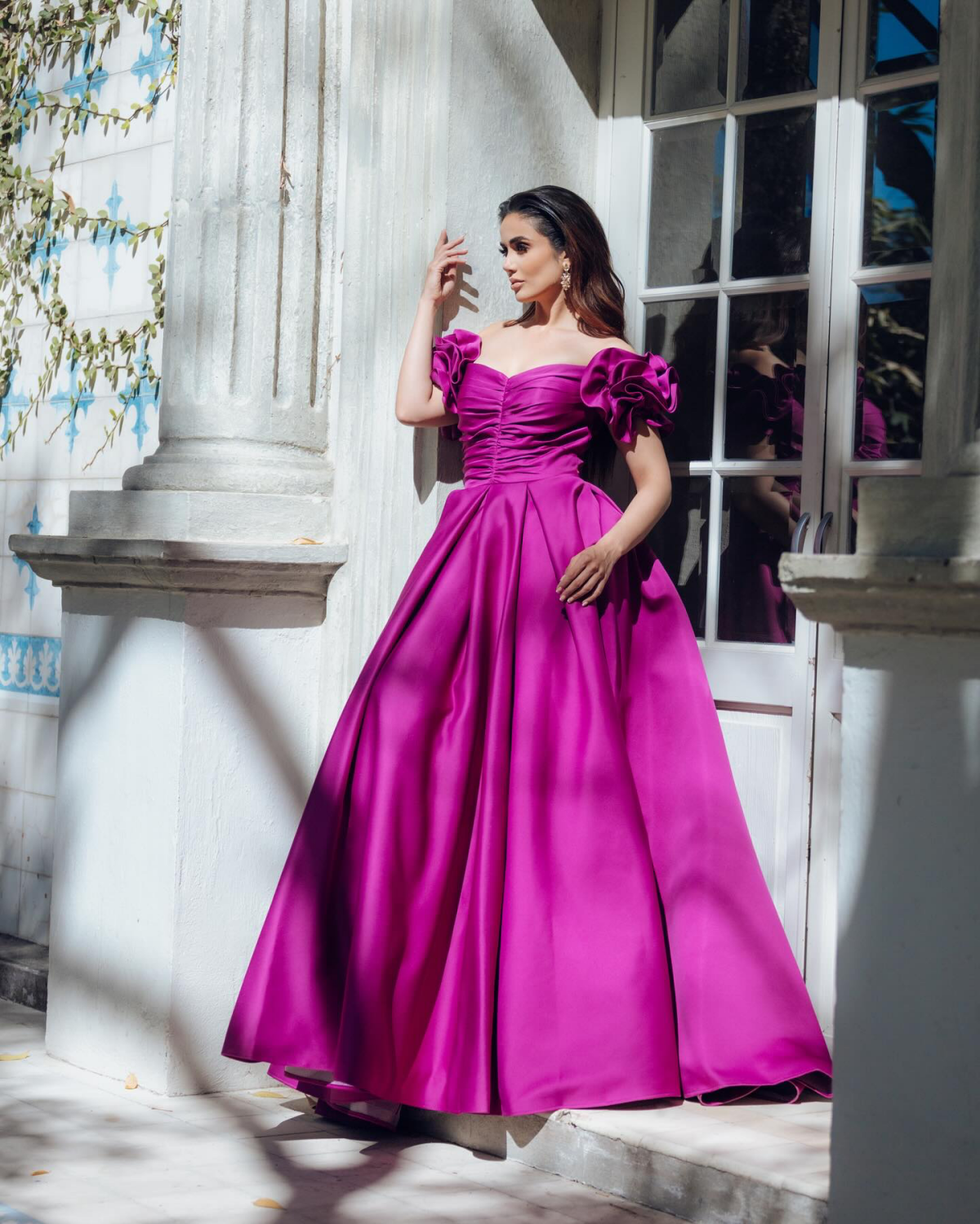
Years ago, I had to completely remake the bodice of a gorgeous plum-colored gown because the bride wanted to add straps after it was finished. The small piece of matching fabric we ordered came from a new dye lot. It was just a hint redder, but it was enough. It looked like a patch job. We had to order yards of the new fabric and recut the entire top. It was a stressful and expensive lesson.
Pro Tip: When you order a colored gown, you must insist that all parts of your order—the dress, any extra fabric, a matching veil—come from the same single dye lot. Any reputable shop or designer will understand and guarantee this.
What to Look For: The Makings of a Quality Colored Gown
Making a white dress versus a colored dress are two different ballgames. With white or ivory, you can get away with a few things. A slightly off-white thread or a standard nude lining is basically invisible. On a purple gown, every single detail has to be flawless because the saturated color makes any mistake pop.
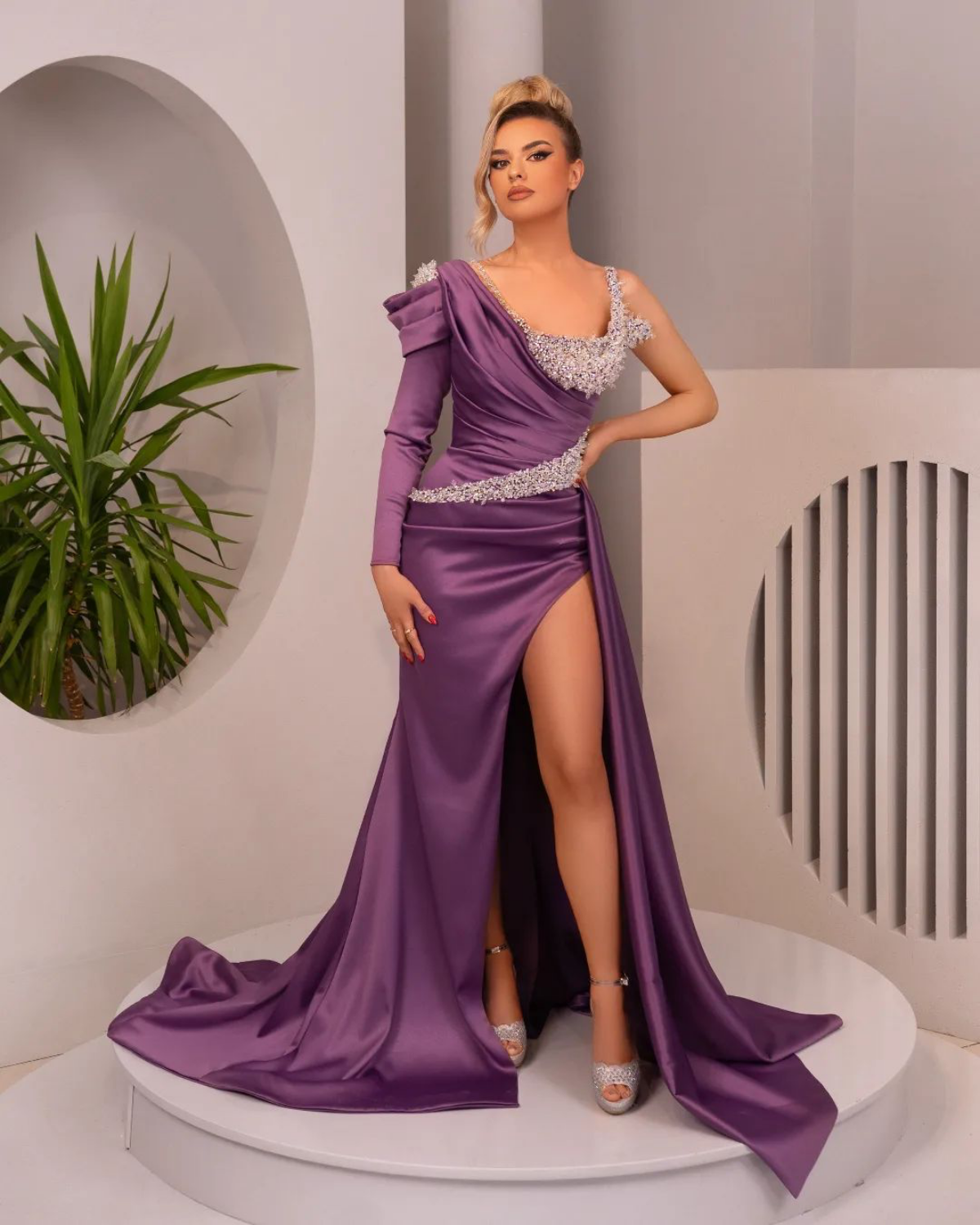
The Inside Story: Linings and Structure
The inside of your dress is just as important as the outside. In a high-quality colored gown, the internal boning and structure are either made from the same purple fabric (which can get bulky) or from a lining that has been dyed to be a perfect match. If you see a light lilac chiffon dress with a standard nude or white lining, that’s a red flag for lower-quality construction. You’ll see the nude color right through the purple, which muddies the shade. A true pro will spend a lot of time sourcing or even custom-dyeing the lining to be an exact match.
Those ‘Invisible’ Details: Thread and Seams
This sounds so minor, but it’s a huge deal. If the thread used for the seams is even a little too light or too dark, it creates a ‘dotted line’ effect that just cheapens the whole look. For delicate fabrics like silk, pros use techniques like a French seam, which encloses all the raw edges inside the seam itself. It’s a beautiful finish that looks clean inside and out—no messy threads, even on a sheer skirt.
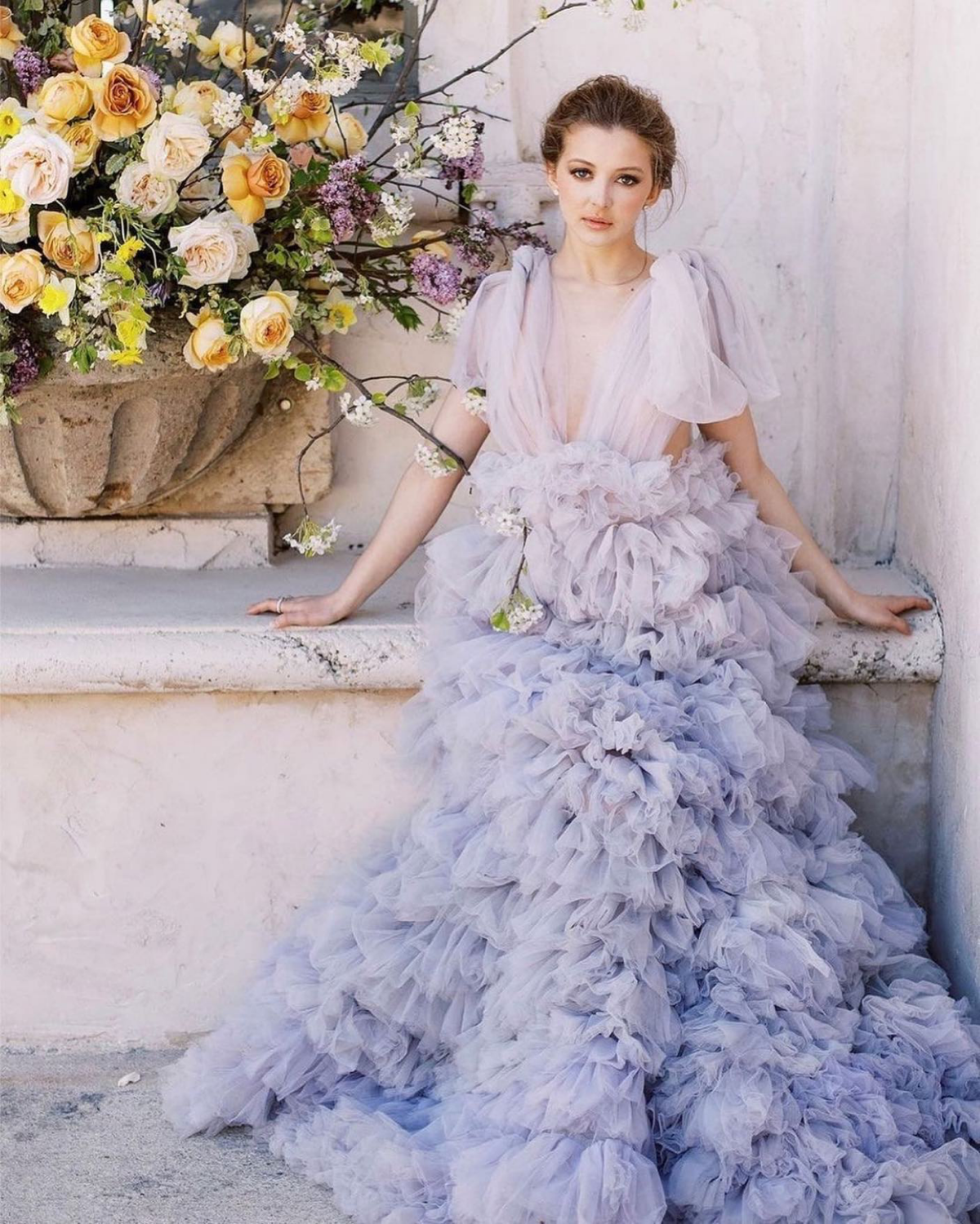
Undergarment Alert!
By the way, let’s talk about what goes underneath. That trusty nude bra you own might not be the right choice. Under a light lavender or periwinkle chiffon, a nude undergarment can actually show through and create a yellowish cast, totally changing the color of the dress. You’ll want to find seamless underwear in a shade that matches the dress, or—and this is a great insider trick—a specific shade of gray. For some reason, certain grays become completely invisible under light-colored fabrics. It’s worth experimenting!
A Practical Bride’s Guide to Going Purple
Okay, you don’t need to be a designer, but you do need to be a smart shopper. Here’s my best advice for navigating the process.
Finding Your Perfect Shade
The big question is always, “Will purple even look good on me?” The answer is a definite yes—as long as you find the right purple for your skin’s undertone.
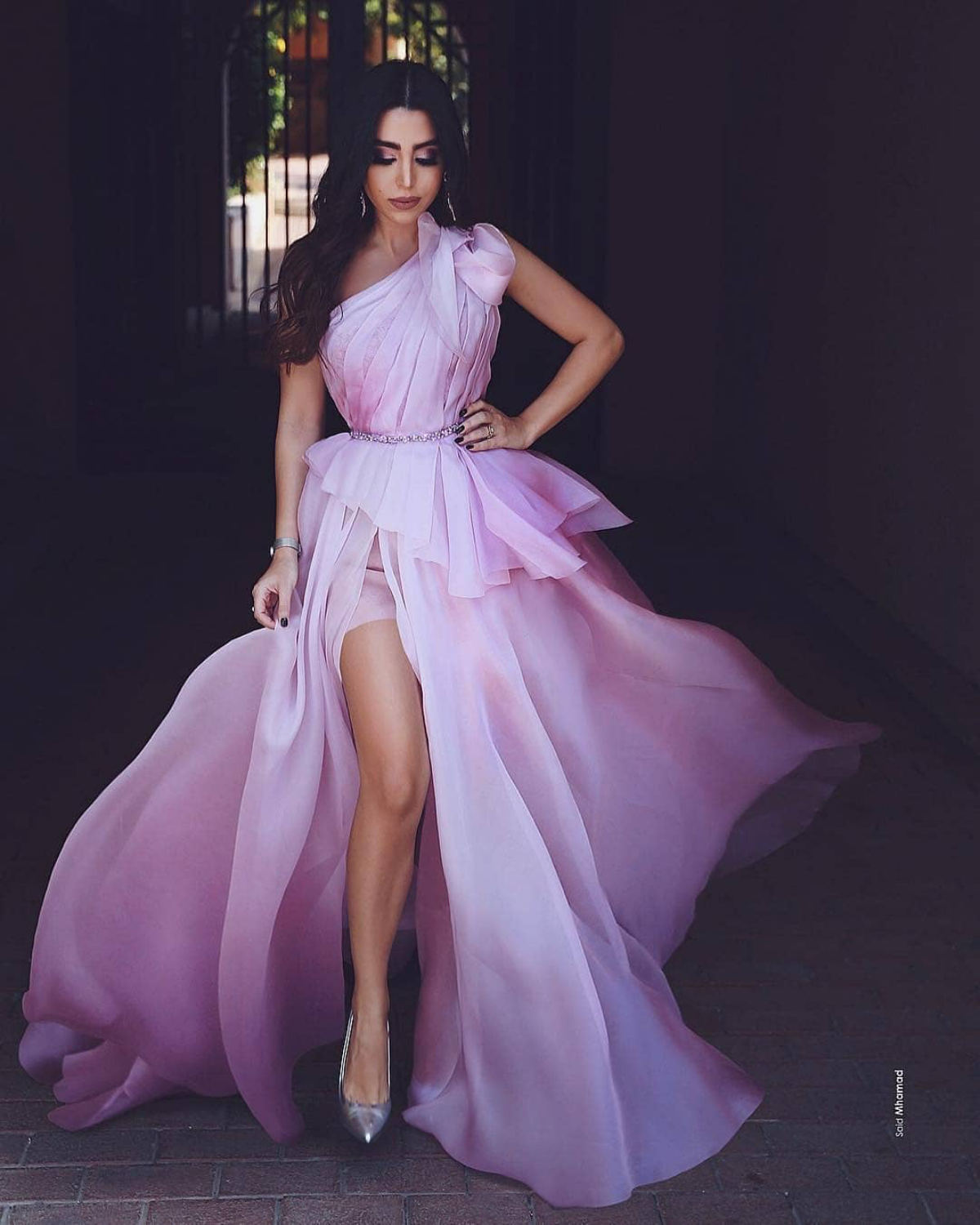
A quick way to check your undertone is to look at the veins on the inside of your wrist in natural daylight.
- Cool Undertones (veins look blue): You’ll look amazing in purples with a blue base. Think of the soft color of a periwinkle flower, a classic lavender, or a deep, dramatic violet. These shades will make your skin look incredibly bright and clear.
- Warm Undertones (veins look greenish): You should lean into purples with a red or pink base. Picture the rich, reddish-purple of a ripe plum, a vibrant magenta, or a warm aubergine. These colors will bring out a beautiful warmth in your skin.
- Neutral Undertones (it’s hard to tell): Lucky you! You can wear just about any shade of purple, so it really just comes down to what you love most.
Trustworthiness Tip: Never, ever choose your color from a computer screen or under the harsh fluorescent lights of a shop. You must get a fabric swatch. Take it home. Hold it up to your face near a window. Take it outside in the sun and in the shade. It’s the only way to be 100% sure.
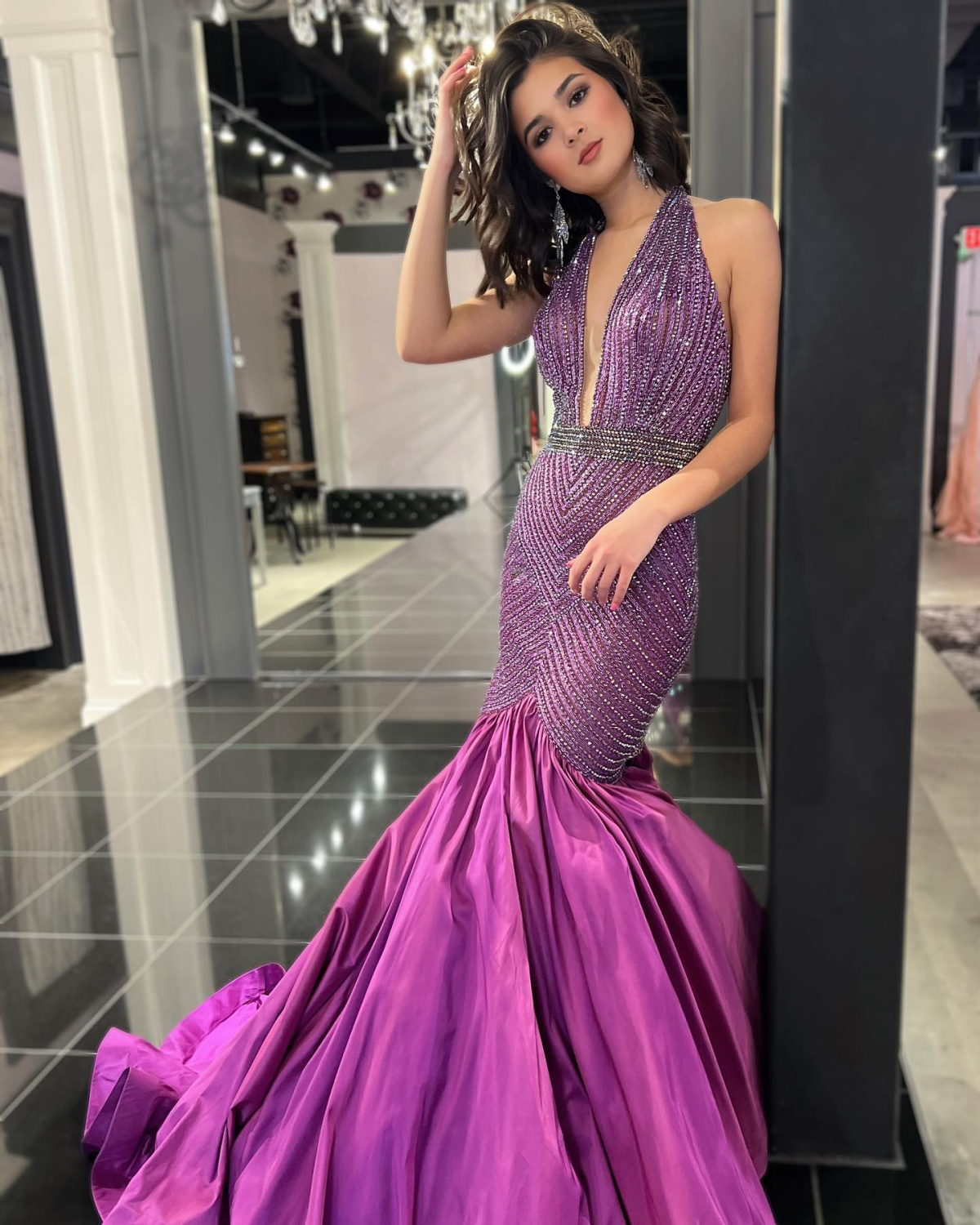
Let’s Talk Money: Budgeting for Color
I have to be straight with you: a high-quality colored wedding dress often costs more than a similar white one. And it’s not an arbitrary markup. It’s because of all the things we’ve talked about—the need for custom-dyed linings, perfectly matched thread, the risk and logistics of sourcing from a single dye lot, and the extra-careful labor involved.
- Off-the-Rack: For a good quality colored gown from a well-known bridal brand, you can generally expect to pay somewhere between $1,800 and $4,000.
- Custom or Couture: If you’re going the custom route, especially with fine silks, you should plan on budgeting about 15-25% more than you would for a comparable white gown. Realistically, these pieces often start around $7,000 and can go way up from there.
Heads Up on Timelines!
This is a big one that catches many brides by surprise. Going for a specific color can add significant time to your dress journey. Sourcing a particular shade of purple silk or getting a custom dye lot just for your gown isn’t an overnight process. It can add several weeks, or sometimes even a couple of months, to your timeline. So, if you have your heart set on a purple dress, you need to start shopping earlier than you might think!
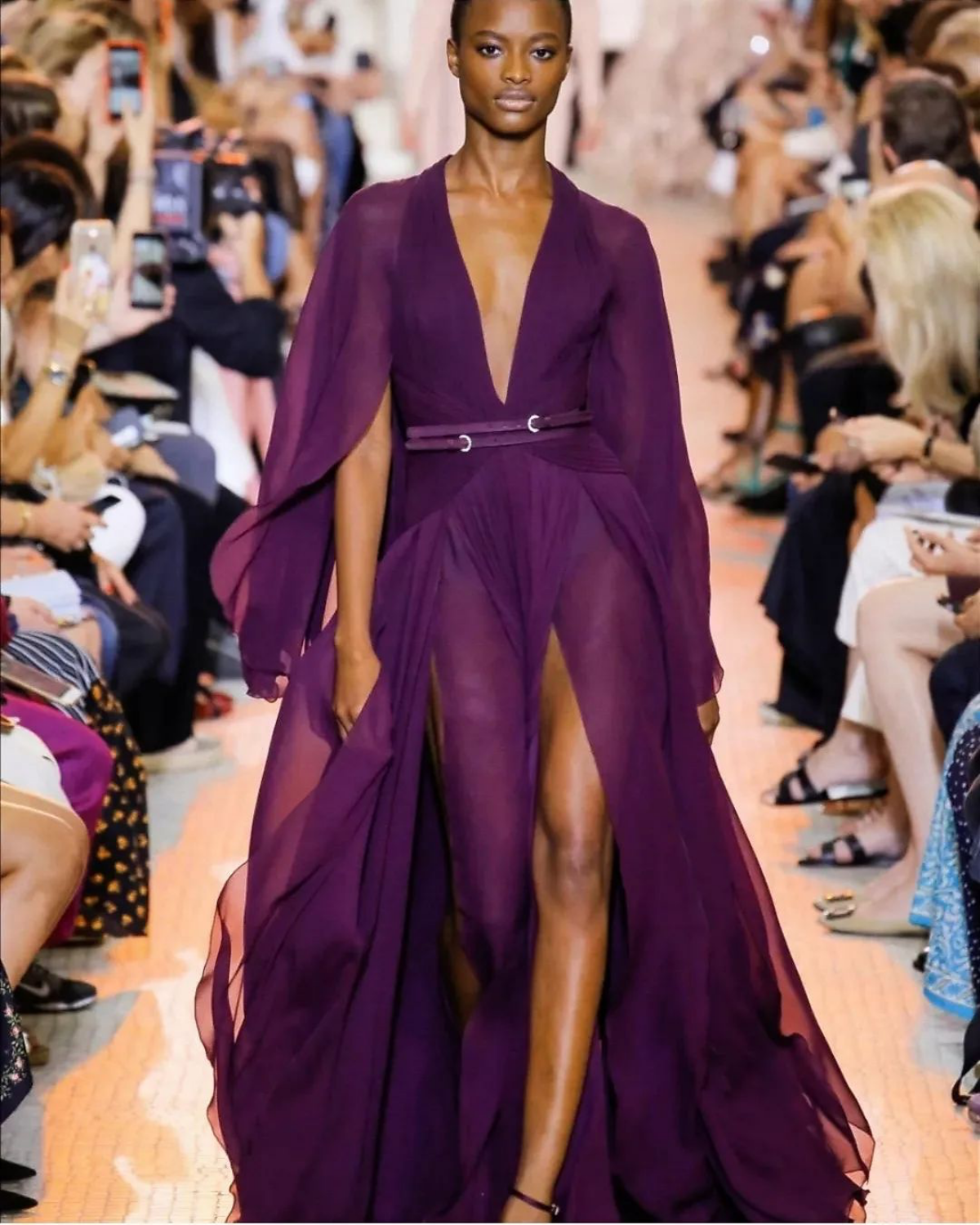
Finding the Right Person for Alterations
Once your dress arrives, you’ll need alterations. Please do not take a beautiful colored gown to just any tailor. You need a seamstress who has specific experience with bridal wear and delicate fabrics.
Come prepared. Here are the questions you should absolutely ask:
- “Have you worked with this specific fabric (silk charmeuse, velvet, etc.) before?”
- “Can you show me an example of a French seam you’ve done?”
- “How do you handle pressing and steaming for delicate colored materials?”
- “What is your process for sourcing perfectly matching thread?”
Their answers will tell you everything. A confident pro will be happy to explain their methods. Anyone who hesitates is a risk you just can’t take.
Final Pro Tips and Long-Term Care
A quick word on some advanced styles and how to care for your dress after the big day.
An ombré or dip-dyed gown is a true work of art, but it’s a highly specialized and expensive process best left to designers with a proven track record. Similarly, a patterned purple brocade or jacquard is stunning, but requires meticulous ‘pattern matching’ at the seams, which takes more fabric and skill.
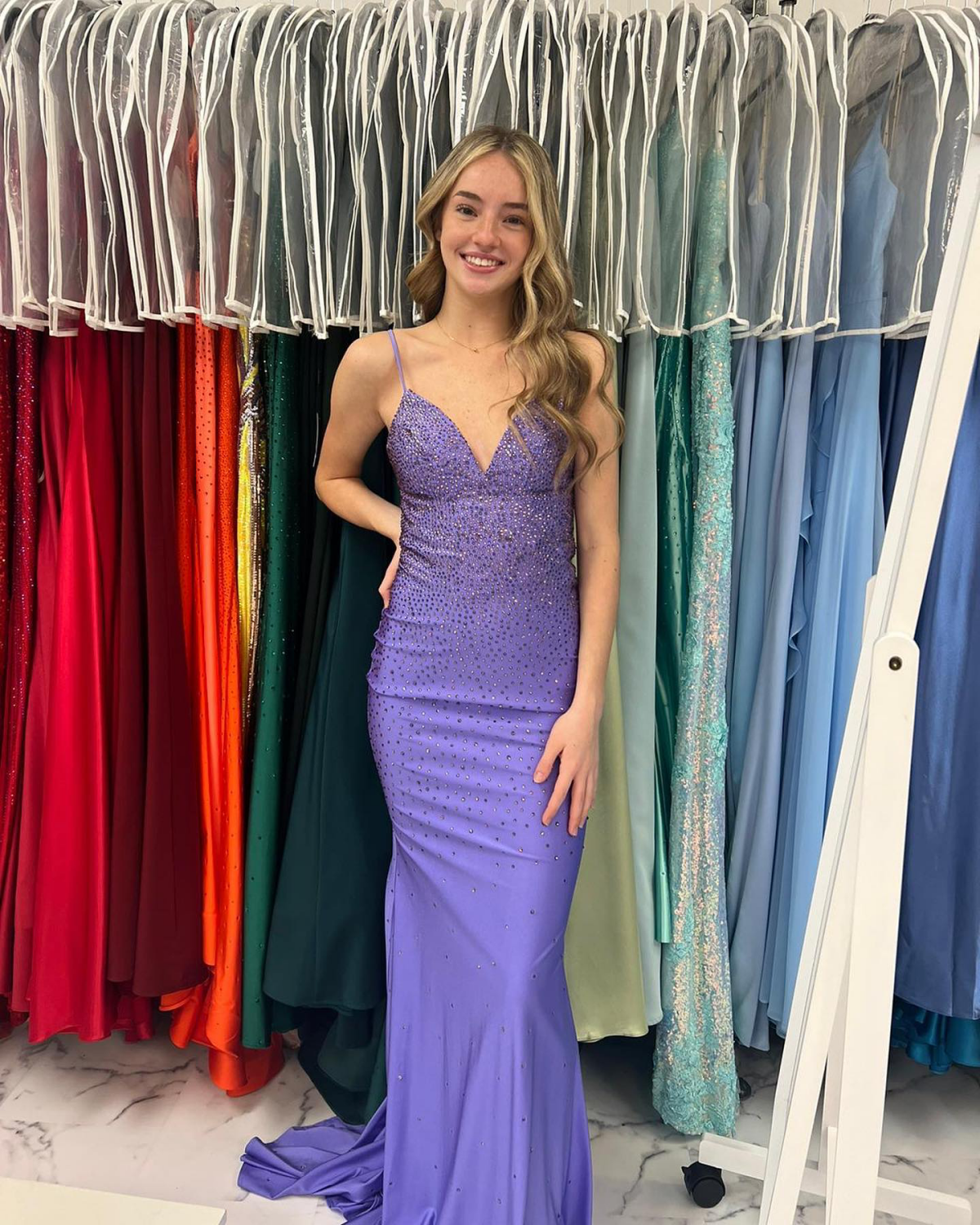
Oh yeah, and a quick safety check: The technical term for when dye rubs off fabric is ‘crocking’. It’s rare with high-quality fabrics, but with a super-saturated color like deep purple, it’s worth a quick test. Before the wedding, take a clean white cloth and rub it vigorously on a hidden inside seam. If any color comes off, you’ll know to be careful around light-colored furniture at your venue!
And my most important piece of advice: Do not take your purple dress to a standard dry cleaner. You must find a specialist cleaner that is trusted by high-end bridal boutiques or even textile museums. They know how to handle delicate dyes and will prevent your dress from being ruined. It’s more expensive, but it’s the only way.
Your Secret Weapon for Finding Inspiration
Staring at a blank search bar? Use these keywords on Pinterest, Etsy, or Google to kickstart your search with the right language:
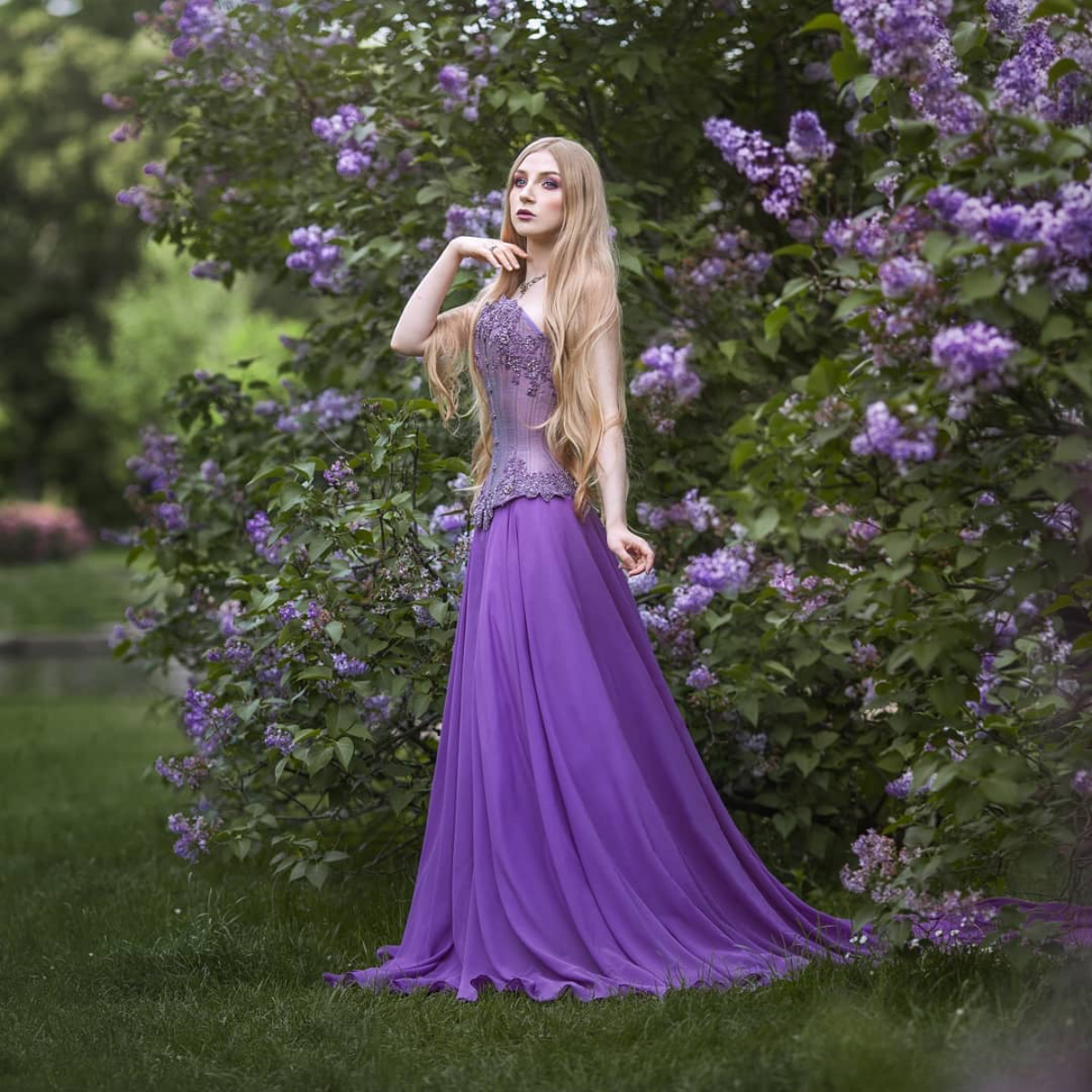
- “Dusty lavender bridal gown”
- “Plum silk wedding dress”
- “Moody purple wedding inspo”
- “Lilac ethereal wedding dress”
- “Aubergine velvet bridal”
- “Periwinkle A-line gown”
A purple wedding dress is such a bold, beautiful statement. It shows confidence and a desire for a day that is deeply personal. While it takes a bit more research and care, the result is a gown as unique and memorable as you are. By understanding the craft behind the color, you can find a dress that you don’t just love, but truly respect for the artistry that brought it to life.
Galerie d’inspiration

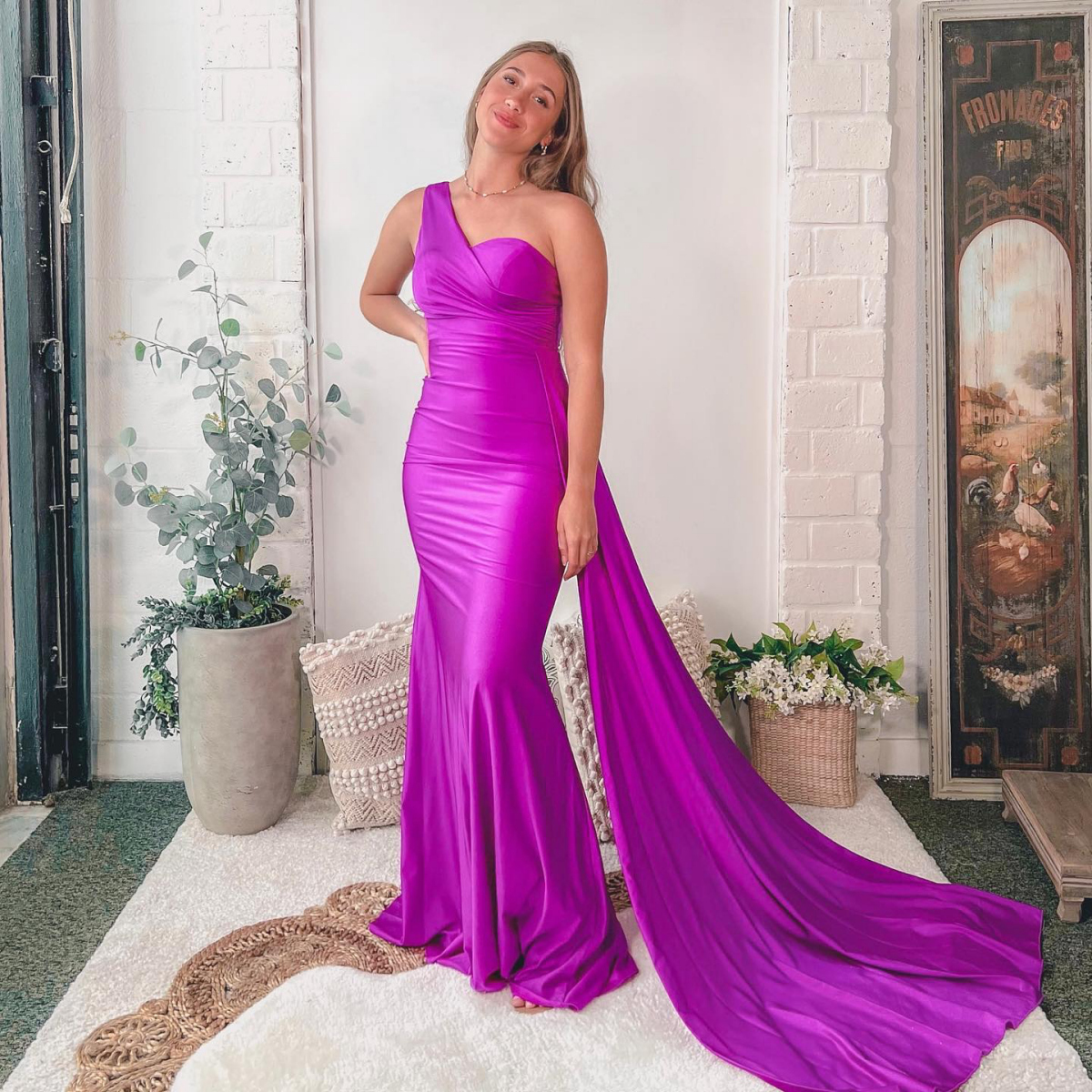
I’ve chosen a beautiful lavender gown. What makeup should I choose to enhance it without looking washed out?
A great question! With lighter purples like lavender or wisteria, the key is definition and warmth. Avoid cool-toned silvers on the eyes, which can look dated. Instead, opt for a soft, matte brown in the crease and a champagne or rose-gold shimmer on the lid. For your complexion, a cream blush in a soft peach or rosy pink, like NARS’s iconic ‘Orgasm’, adds a healthy flush. Finish with a berry-toned lip stain or a warm nude lipstick. The goal is to create a radiant look that complements the dress rather than competing with it.
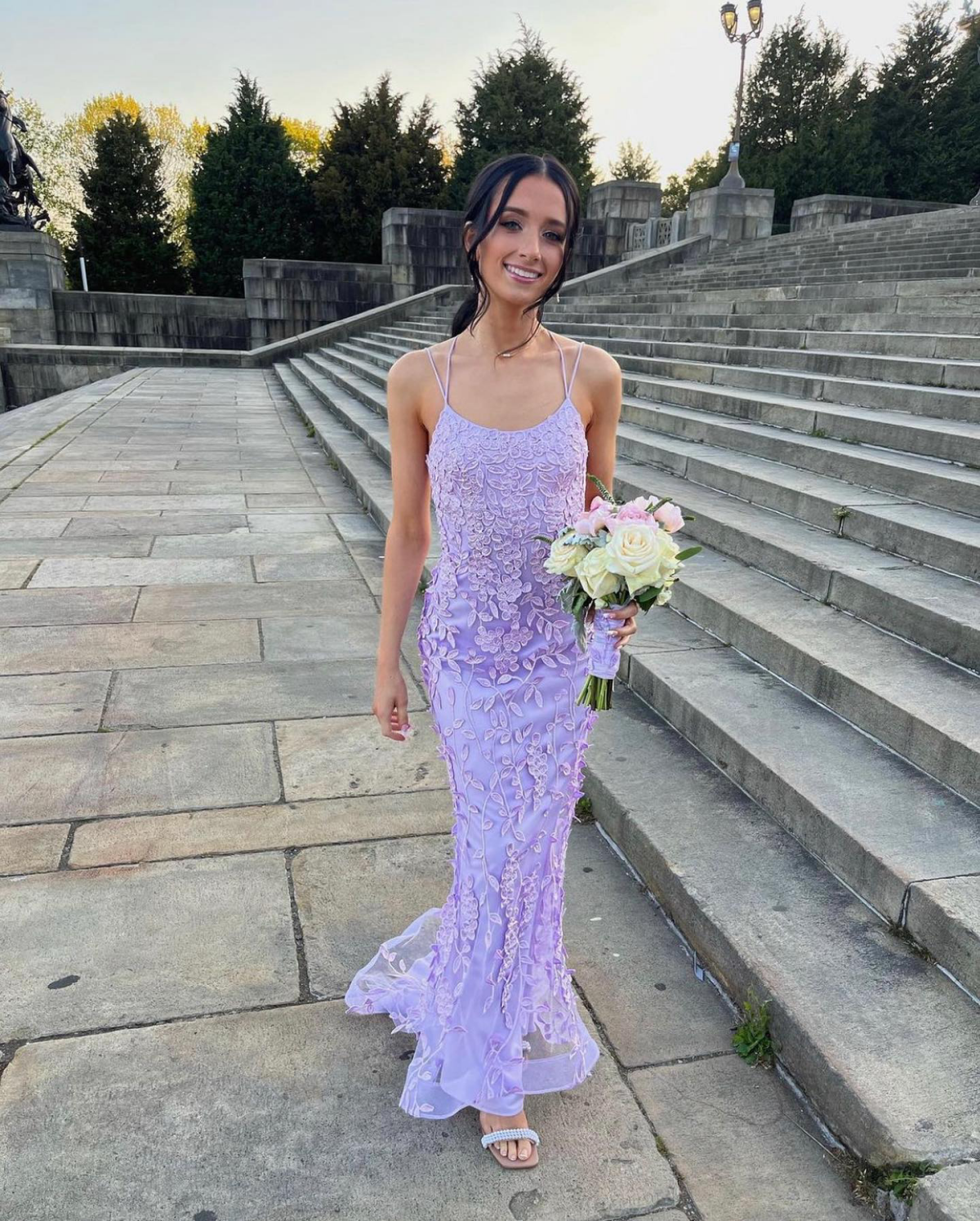
Throughout the Roman Empire, the dye known as Tyrian purple, extracted from sea snails, was worth more than its weight in gold. Sumptuary laws restricted its use to the Emperor alone, cementing its association with power and divinity.
Wearing purple today may not be a decree of law, but choosing it for your wedding taps into this ancient legacy of royalty and unique importance. It’s a color that inherently communicates luxury, creativity, and a touch of the magical.

Finding the perfect purple gown means looking beyond traditional bridal boutiques. Consider your options:
Bespoke Bridal: This is the route for ultimate customization. Designers like Vera Wang or Christian Siriano are masters of color and can create a gown in the exact shade and fabric you dream of. The experience is unparalleled, but so is the price tag.
Evening Wear Collections: Don’t overlook the evening wear section of department stores or designers like Marchesa Notte or Tadashi Shoji. You can often find stunning amethyst or plum gowns at a more accessible price point. They may require minor alterations to feel more “bridal,” like adding a train or a custom veil.
Your bouquet is the ultimate accessory to your purple dress. The right floral palette will make your gown pop and tie your entire aesthetic together. Think in complementary or contrasting tones:
- For a deep plum or aubergine dress, create drama with creamy white peonies, dusty pink roses, and cascades of silver-dollar eucalyptus.
- If your gown is a soft lilac, lean into a romantic, meadow-inspired look with buttery yellows, pale blues from delphiniums, and sprigs of lavender.
- For a vibrant magenta or fuchsia-purple, go bold with a clashing bouquet of sunset oranges and hot pinks for a truly unforgettable statement.

